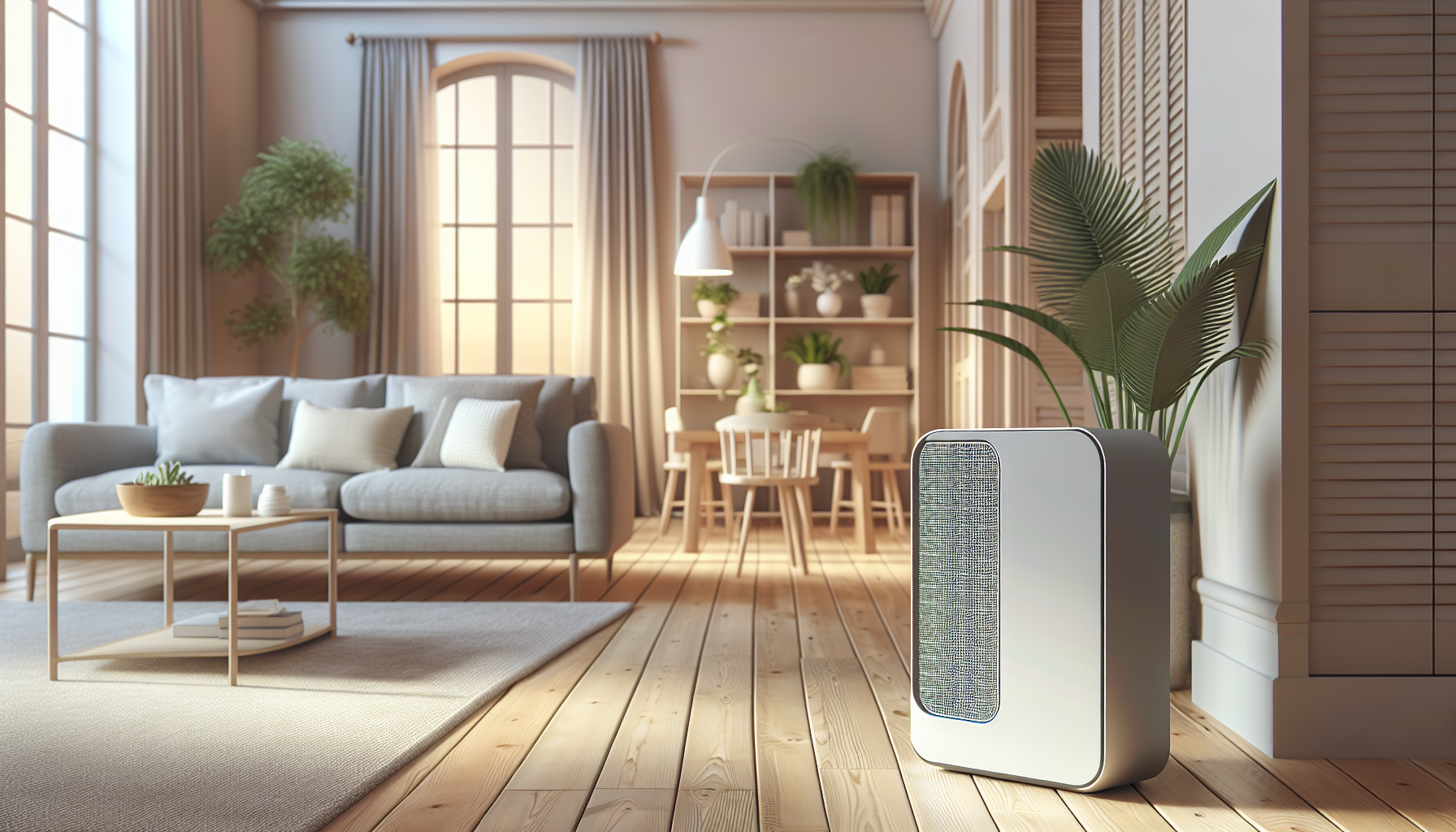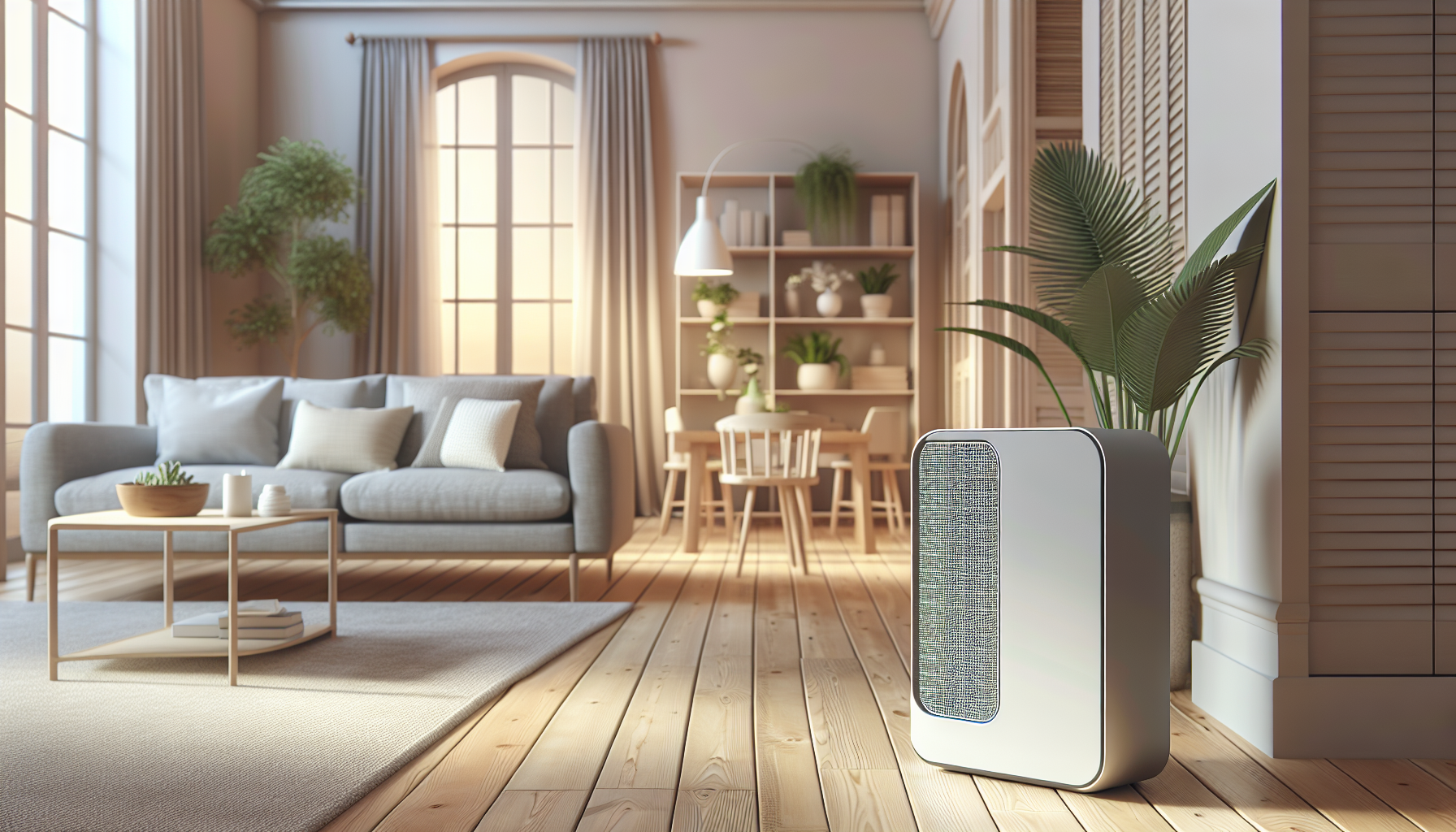Have you ever wondered if air purifiers actually work? With so many options on the market claiming to remove pollutants and improve air quality, it can be difficult to separate fact from fiction. In this article, we will explore the effectiveness of air purifiers and whether they truly deliver on their promises. Whether you suffer from allergies, want to eliminate unpleasant odors, or simply breathe cleaner air, read on to discover the truth about air purifiers and how they can potentially benefit you and your home.

What is an air purifier?
Definition and purpose
An air purifier is a device designed to improve the quality of the air we breathe. It works by removing pollutants, allergens, and other particles from the air, ensuring that the air we breathe is clean and healthy. The purpose of an air purifier is to create a more comfortable and safe indoor environment, especially for individuals with respiratory conditions or those looking to improve their overall well-being.
Types of air purifiers
There are several different types of air purifiers available on the market, each with its own unique technology and method of filtration. The most common types include:
-
HEPA Filters: High-efficiency particulate air (HEPA) filters are the most popular type of air purifiers. They use a dense filter material to capture and trap particles as small as 0.3 microns in size, effectively removing allergens, dust, and other contaminants from the air.
-
Activated Carbon Filters: These filters are highly effective in removing odors, gases, and chemical pollutants from the air. The activated carbon works by adsorbing and trapping these pollutants, resulting in fresher and cleaner air.
-
UV Germicidal Irradiation: This technology uses UV-C light to kill bacteria and viruses in the air. It is commonly used in hospitals and healthcare facilities to prevent the spread of airborne infections.
-
Ionic Air Purifiers: Also known as ionizers, these purifiers release negative ions into the air, which attach to airborne particles and make them too heavy to remain airborne. The particles then fall onto surfaces, where they can be easily cleaned.
-
Ozone Generators: Ozone generators work by producing ozone, a gas that can remove odors and kill bacteria. However, they are controversial and should be used with caution due to potential health risks.
How do air purifiers work?
Principles of air purification
Air purifiers operate on the principle of trapping and removing airborne particles using various filtration systems. They draw in the surrounding air, filter out pollutants, and release cleaner air back into the environment. This process helps to improve indoor air quality and reduce the concentration of harmful pollutants, allergens, and irritants.
Filtration systems
Most air purifiers utilize one or more filtration systems to remove pollutants from the air. HEPA filters, as mentioned earlier, are the most common type of filtration system used in air purifiers. These filters have a dense fiber structure that captures particles by trapping them as the air passes through. Activated carbon filters, on the other hand, focus on adsorbing chemical gases and odors. Some purifiers combine multiple filtration systems to provide comprehensive air cleaning.
Mechanisms of capturing pollutants
Air purifiers use a variety of mechanisms to capture pollutants and improve indoor air quality. These mechanisms may include physical filtration, chemical adsorption, UV-C light sterilization, and ionization. Physical filtration involves trapping particles within the filter media, while chemical adsorption involves the capture of gaseous pollutants through chemical reactions. UV-C light sterilization kills bacteria and viruses, while ionization charges particles, making them more easily captured on surfaces.
What pollutants can air purifiers remove?
Dust and allergens
Air purifiers with HEPA filters are highly effective in removing dust and allergens from the air. The filters can trap particles as small as 0.3 microns, capturing pollen, pet dander, and dust mites that can trigger allergies and respiratory issues.
Pet dander and hair
If you have pets at home, air purifiers can be a great way to reduce pet allergens such as dander and hair. HEPA filters and activated carbon filters can effectively capture and remove these allergens, creating a more comfortable environment for pet owners and those with pet allergies.
Mold and mildew spores
Air purifiers can help in reducing mold and mildew spores in the air, which can be a common problem in humid environments or areas with water damage. HEPA filters can effectively trap these microscopic spores, preventing them from spreading and potentially causing respiratory issues.
Smoke and odors
Air purifiers equipped with activated carbon filters are especially effective in removing smoke particles and odors from the air. Whether it’s cigarette smoke, cooking odors, or other unpleasant smells, these filters can help freshen the air and create a more pleasant indoor environment.
Bacteria and viruses
Certain air purifiers, such as those using UV germicidal irradiation, have the ability to kill bacteria and viruses in the air. UV-C light damages the DNA and RNA of these microorganisms, rendering them incapable of reproduction and causing their demise.
Benefits of using air purifiers
Improved indoor air quality
One of the primary benefits of using an air purifier is the significant improvement in indoor air quality. By removing particles, allergens, and pollutants from the air, air purifiers create a cleaner and healthier environment for you and your family to breathe.
Reduced allergy and asthma symptoms
Air purifiers can provide relief for individuals with allergies, asthma, and other respiratory conditions. By capturing and removing allergens such as pollen, dust mites, and pet dander, air purifiers can help reduce the triggers that cause symptoms, allowing for easier breathing and a decrease in allergy-related issues.
Removal of harmful chemicals
Air purifiers equipped with activated carbon filters are excellent at capturing and adsorbing harmful chemicals, volatile organic compounds (VOCs), and gases. This feature is particularly beneficial for those living in urban environments or areas with poor outdoor air quality.
Elimination of unpleasant odors
Air purifiers with activated carbon filters can effectively eliminate unpleasant odors from cooking, pets, or other sources. This can create a more inviting and fresh-smelling home environment.
Limitations of air purifiers
Ineffectiveness against certain pollutants
While air purifiers are highly effective in removing most airborne pollutants, they may not be as effective against certain pollutants, such as formaldehyde, radon, and some chemical gases. These pollutants may require specialized filtration systems or additional measures to effectively reduce their presence in indoor air.
Limited range and coverage
Air purifiers have a limited range and coverage area. It is important to consider the size of the room or area you intend to use the purifier in. Larger rooms may require multiple units or a more powerful air purifier to ensure effective air cleaning.
Maintenance requirements
Air purifiers require regular maintenance to continue functioning optimally. This typically involves cleaning or replacing filters, cleaning the unit, and ensuring proper airflow. Neglecting maintenance can reduce the effectiveness of the purifier.
Noise level
Some air purifiers can produce noise, especially at higher fan speeds or when equipped with additional features such as ionizers or UV-C lights. Consider the noise level of the air purifier and choose a model that suits your preferences and needs.
Effectiveness of air purifiers
Scientific studies and research
Numerous scientific studies and research have been conducted to evaluate the effectiveness of air purifiers in improving indoor air quality. These studies have shown that air purifiers can indeed help capture and remove a wide range of pollutants, resulting in cleaner air and improved respiratory health.
Consumer reviews and experiences
Many consumers have reported positive experiences with air purifiers, sharing how they have noticed a significant improvement in their indoor air quality and overall well-being. These testimonials, combined with scientific research, further support the effectiveness of air purifiers in creating a healthier living environment.
Considerations before purchasing an air purifier
Specific needs and concerns
Identify your specific needs and concerns before purchasing an air purifier. Whether you have allergies, asthma, or specific chemical sensitivities, choosing a purifier tailored to your needs can provide the best results.
Room size and coverage
Consider the size of the room or area you intend to use the air purifier in. Ensure that the purifier you choose is suitable for the square footage of the room to ensure optimal performance.
CADR (Clean Air Delivery Rate)
The Clean Air Delivery Rate is a measurement of how quickly the air purifier can clean the air in a specific room size. Look for air purifiers with higher CADR ratings, as they can clean the air faster and more effectively.
Filter quality and replacements
Check the quality of filters used in the air purifier and the availability of replacements. High-quality filters are essential for optimal performance and should be easily accessible for replacement when necessary.
Noise level and energy consumption
Consider the noise level and energy consumption of the air purifier. Look for models that offer quiet operation and energy-saving features to ensure a comfortable and efficient experience.
Budget
Determine your budget for an air purifier. Prices can vary depending on the features, brand, and size of the purifier. Consider your budget alongside the specific features and benefits you are looking for in a purifier.
Common misconceptions about air purifiers
Complete elimination of pollutants
It is important to note that even the most advanced air purifiers cannot completely eliminate all pollutants from the air. While they can significantly reduce airborne particles, allergens, and odors, complete elimination of all pollutants is not realistic.
Instant relief from allergies
While air purifiers can help reduce allergens in the air, they may not provide instant relief from allergy symptoms. It may take time for the air to be effectively filtered and for allergen levels to decrease. Consistent use of an air purifier can help provide long-term relief and improvement.
Negating the need for regular cleaning
Air purifiers should not be seen as a replacement for regular cleaning and maintenance. Dusting, vacuuming, and other cleaning practices are still necessary to remove settled particles and maintain a clean indoor environment.
Replacement for ventilation
While air purifiers can improve indoor air quality, they are not a replacement for proper ventilation. Adequate ventilation is essential to ensure a constant supply of fresh outdoor air and prevent the buildup of indoor pollutants.
Are there any potential health risks?
Ozone emissions
Ozone generators, which produce ozone as a part of their air purification process, can be potentially harmful if used improperly. High levels of ozone can irritate the respiratory system and worsen existing respiratory conditions. It is important to use ozone generators with caution and follow manufacturer guidelines.
Ionizers and electromagnetic radiation
Some air purifiers that utilize ionizers emit low levels of electromagnetic radiation. While these levels are typically considered safe and within regulatory limits, individuals with specific sensitivities or concerns about electromagnetic radiation should consider alternative air purifier options.
Excessive reliance on air purifiers
While air purifiers can be beneficial, it is important not to rely solely on them for maintaining indoor air quality. Combining the use of air purifiers with other proactive measures such as regular cleaning, proper ventilation, and reducing sources of indoor pollution is crucial for maintaining a healthy indoor environment.
Conclusion
Air purifiers are valuable devices that can greatly contribute to healthier indoor environments. By effectively capturing and removing pollutants, allergens, and odors, air purifiers help improve overall indoor air quality and reduce respiratory issues. However, it is important to understand their limitations and choose the right purifier for your specific needs. With proper maintenance and consideration of individual requirements, air purifiers can be a reliable tool in creating a cleaner and more comfortable living space.

